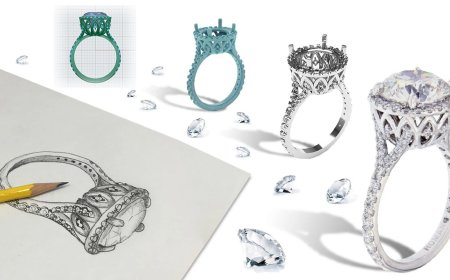Protect Your Pinterest Account from Hackers: Must-Know Tips
Pinterest is a vibrant platform where millions of users discover, pin, and share ideas daily. Whether youre a casual user, content creator, or business owner using Pinterest to drive traffic and promote your brand, your account holds valuable dataand its a potential target for hackers.
With increasing cyber threats and unauthorized access cases across all platforms, its essential to protect your account from hackers, especially if you rely on Pinterest for personal projects or professional success.
In this article, well explore how hackers exploit Pinterest accounts, the red flags to watch for, and the exact steps you need to take to keep your Pinterest account secure and your pins safe.
Why Pinterest Accounts Get Hacked
You may think your Pinterest profile isnt worth a hackers time, but think again. Heres why hackers target Pinterest:
Access to linked websites and analytics tools
Stealing popular pins and redirecting them to spammy or malicious websites
Hijacking group boards to spread scams or fake links
Gaining control of business profiles to impersonate brands or steal ad spend
Exploiting personal info if your account is connected to email or other platforms
In short, your Pinterest account is more valuable than you thinkespecially if youve built a following or generate traffic from the platform.
Warning Signs Your Account May Be Compromised
Before diving into prevention, be aware of the signs that your Pinterest account might be under attack:
Unusual logins or session activity
Pins being deleted, edited, or posted without your permission
Links in your pins being redirected to other websites
Receiving warnings from Pinterest about suspicious activity
Followers reporting spam from your profile
If you notice any of these red flags, take immediate action. But even betterfollow the tips below to avoid becoming a target in the first place.
1. Use a Strong, Unique Password
The easiest way to protect your account from hackers is by having a secure password.
Avoid common passwords like 123456, qwerty, or your birthdate. Instead:
Use at least 12 characters
Combine letters, numbers, and symbols
Avoid reusing passwords from other accounts
Consider using a password manager to generate and store complex passwords securely
Change your password regularly, especially if you suspect a breach.
2. Enable Two-Factor Authentication (2FA)
Pinterest supports two-factor authentication, which adds a second layer of security to your account. When enabled, youll need to enter a verification code (usually sent to your phone or email) in addition to your password.
To activate 2FA:
Go to Settings > Security
Turn on Two-Factor Authentication
Follow the steps to link your phone or authentication app
This feature alone can block the majority of hacking attempts, even if your password is stolen.
3. Regularly Review Connected Devices and Apps
Hackers sometimes gain access through third-party apps or previously logged-in devices. Periodically check which devices or apps are connected to your Pinterest account:
Navigate to Settings > Account Settings > Connected Devices
Remove any that look unfamiliar
Revoke access to apps you no longer use
If youre not sure about an apps legitimacy, disconnect it to be safe.
4. Secure Your Linked Email Account
Your Pinterest login is often tied to your email address. If a hacker compromises your email, they can reset your Pinterest password and take full control.
To secure your email:
Use a different strong password than your Pinterest one
Enable two-factor authentication on your email account
Avoid clicking suspicious links or attachments in emails
Log out of email accounts when using public or shared computers
Your Pinterest security is only as strong as your email protection.
5. Beware of Phishing Scams and Fake Emails
Hackers often send fake emails pretending to be from Pinterest, asking you to reset your password, click a link, or verify account information.
Avoid falling for phishing by:
Double-checking the senders email address
Hovering over links before clicking to see their destination
Logging into Pinterest directly (not through email links) if youre unsure
Reporting suspicious messages to Pinterest immediately
Never enter your login info on a non-Pinterest domain.
6. Log Out on Shared or Public Devices
If you log into Pinterest on a public or shared device (like a library computer or someone elses phone), always log out when you're done. Otherwise, someone else could gain full access to your account.
Also, avoid saving passwords in browsers on public machines.
7. Regularly Monitor Your Pins and Boards
Keep an eye on your boards and pins. If you see unexpected changeslike pins linking to other websites or unfamiliar pins being postedyou might be under attack.
To stay proactive:
Review your recent activity
Use Pinterest Analytics (for business accounts) to track traffic sources
Check your board collaborators (remove anyone unfamiliar)
Keep your group boards private if you suspect spam activity
Staying aware helps you catch and fix problems early.
What to Do If Your Pinterest Account Gets Hacked
If your Pinterest account is already compromised:
Change your password immediately
Enable two-factor authentication
Log out of all devices under your account settings
Contact Pinterest Support and report the incident
Scan your devices for malware or keyloggers
Pinterests support team can help you recover your account and prevent further damage.
Final Thoughts: Protect Your Creative Space
Pinterest is more than a place to save ideasits a creative portfolio, business tool, and traffic machine. Thats why its crucial to protect your account from hackers and ensure your content stays safe, secure, and under your control.
Heres a quick recap of your Pinterest protection plan:
? Use a strong, unique password
? Enable two-factor authentication
? Review and manage connected devices
? Protect your linked email account
? Avoid phishing scams
? Log out on public devices
? Monitor your account activity
Taking a few smart steps now will save you from stress later. Secure your Pinterest presence todayand keep your creative world safe from digital threats.












































